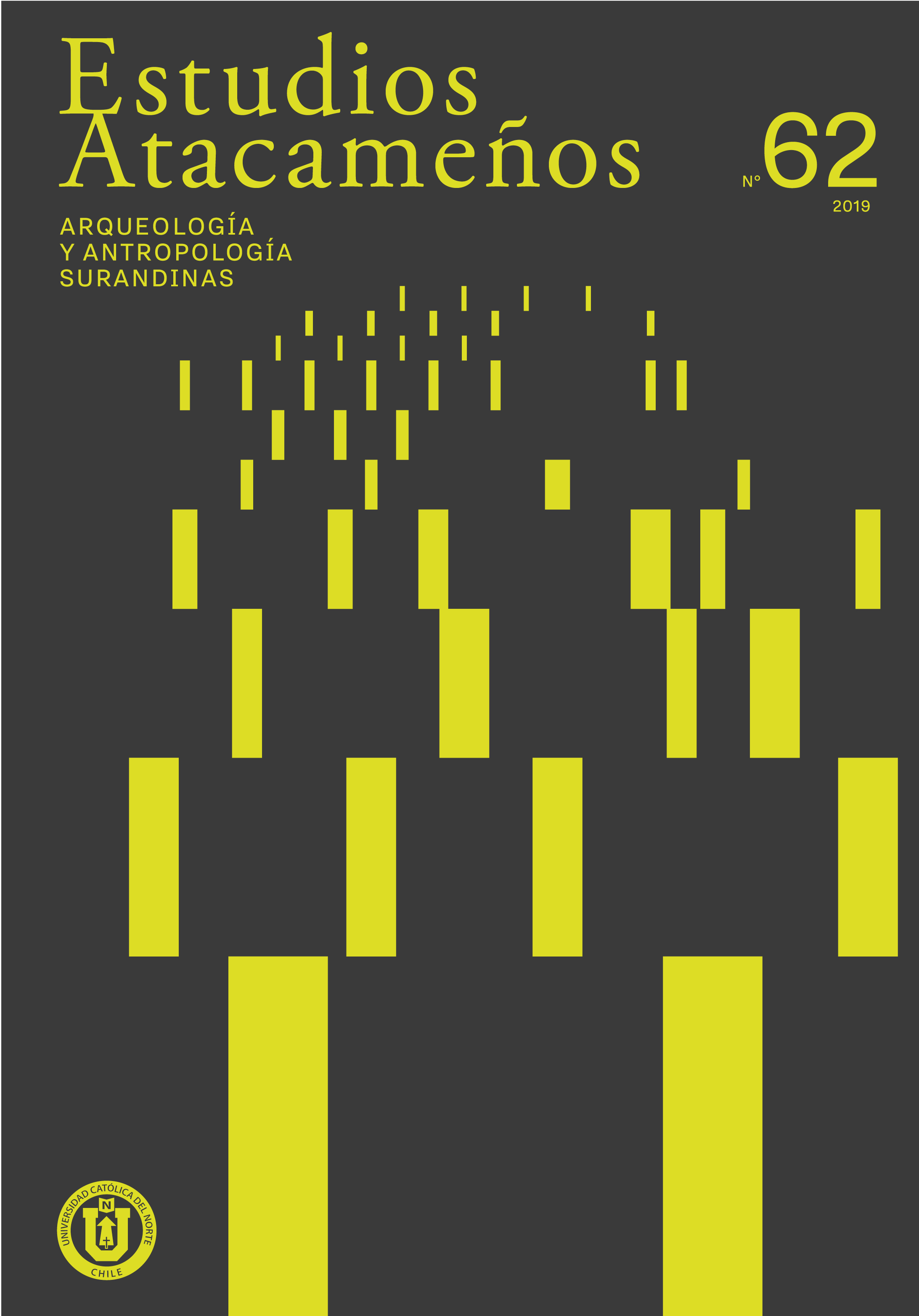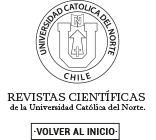From Control to Biomonitoring:
Life as its Own Sentinel
DOI:
https://doi.org/10.22199/issn.0718-1043-2019-0003Keywords:
biosurveillance, biomonitorization, Early Warning Systems, epidemics, controlAbstract
Implementation of so-called Early Warning Systems (EWS) had grown exponentially from its birth in the mid-twentieth century. That growth has been in number, sophistication and application realms (earthquakes, floods, global warming, hurricanes...). This paper analyses the use of Early Warning Systems in the contemporary logics of biosurveillance. In order to do this, we will offer an analysis of documentary material and images, both pertaining to the study case focused on epidemics and biosecurity we conducted for three years. The aim is to illustrate the features of the contemporary biosurveillance logics. Finally, we will conclude by saying that in these logics of biosurveillance are brewing a profound change in the way life is monitored. We have called it biomonitorization: life is no longer just passive and controlled by different devices; now, it also plays an active, surveilling and monitorizing role. Then, citizens become biocitizens.
Downloads
References
Agamben, G. (2004). Estado de Excepción. Homo Sacer II, 1. Valencia: Editorial Pre-Textos. Anderson, B. (2010). Preemption, precaution, preparedness: Anticipatory action and future geographies. Progress in Human Geography, 34(6), 777-798.
Barnes, C., Mercer, G. (2006). Independent Futures. Creating user-led disability services in a disabling society. Bristol: The Policy Press.
Bauman, Z. y Lyon, D. (2013). Vigilancia Líquida. Barcelona: Paidós.
Braun, B. (2004). Power over life. En Dobson, A., Barker, K. y Taylor, S. L. (Eds.). Biosecurity, the Socio-Politics of invasive species and infectious diseases. New York: Routledge.
Callén, B., Domènech, M., López, D. y Tirado, F. (2009). Telecare Research: (Cosmo)policizing methodology. ALTER, European Journal of Disability Research, 3, 110-122.
Choi, B. (2015). What Could Be Future Scenarios? Lessons from the History of Public Health Surveillance for the Future. AIMS Public Health, 2(1), 27-43.
Collier, S. (2008). Enacting Catastrophe: preparedness, insurance, budgetary rationalization. Economy and society, 37(2), 225-250.
Collier, S. y Lakoff, A. (2014). Vital Systems Security: Reflexive Biopolitics and the Government of Emergency. Theory, Culture and Society, 32(2), 19-51.
Davis, M., Flowers, P., Lohm, D., Waller, E. y Stephenson, N. (2016). Immunity, Biopolitics and Pandemics: Public and Individual Responses to the Threat to Life. Body and Society, 22(4), 130-154.
Dehner, G. (2011). Creating the World Influenza Surveillance System: Surveillance with a Purpose. En After 1918: History and Politics of Influenza in the 20th and 21st Centuries. August 24-26.
Deleuze, G. (1999). Post-scriptum sobre las sociedades de control. Valencia: Pre-Textos.
Deleuze, G. y Guattari, F. (2002). Mil Mesetas. Valencia: Pre-Textos.
Department for Environment, Food and Rural Affairs Animal & Plant Health Agency Veterinary & Science Policy Advice Team. (2001). International Disease Monitoring. Updated Outbreak Assessment Update on Highly Pathogenic Avian Influenza: Europe, America and the Middle East.
Domènech, M. y Tirado, F. (2011). Ciencia, Tecnología y Ciudadanía: La Cosmopolítica y la Reinvención de la Democracia. En González de la Fe, T. y López Peláez, A. (Coords.). Innovación, conocimiento científico y cambio social. Ensayos de sociología ibérica de la ciencia y la tecnología. Madrid: CIS.
Dooley, L. (2002). Case Study Research and Theory Building. Advances in Developing Human Resources, 4(3), 335-354.
Eidson, M., Kramer, L., Stone, W., Hagiwara, Y., Schmit, K. and The New York State West Nile VirusAvian Surveillance Team (2001). Dead Bird Surveillance as an Early Warning System for West Nile Virus. Emerging Infectious Diseases, 7(4), 631-635.
European Centre for Conflict Prevention (2006). Early Warning and Early Response: Conceptual and Empirical Dilemmas.Fearnley, L. (2005a). Pathogens and the Strategy of Preparedness. ARC Working Paper, Nº 3, November 29.
Fearnley, L. (2005b). From Chaos to Controlled Disorder: Syndromic Surveillance, Bioweapons, and the Pathological Future. ARC Working Paper, Nº 5, March 25.
Fearnley, L. (2008). Signals come and go: syndromic surveillance and styles of biosecurity. Environment and Planning A, 40, 1615-1632
Foucault, M. (2001). Hay que Defender la Sociedad. Buenos Aires: Fondo de Cultura Económica de Argentina.
Foucault, M. (2002). Vigilar y Castigar. Buenos Aires: Siglo XXI.
Foucault, M. (2007). El Nacimiento de la Biopolítica. Buenos Aires: Fondo de Cultura Económica de Argentina.
Gomm, R., Hammersley, M. y Foster, P. (2000). Case Study Method. London: SAGE.
Gowler, D., Legge, K. y Clegg, C. (1993). Case studies in organizational behaviour and Human Resource Management. British Journal of Industrial relations, 12, 614-615.
International Federation of Red Cross and Red Crescent Societies (2012). Community Early Warning Systems. Guiding Principles. Geneva: IFRC.
Keck, F. (2014). From purgatory to sentinel: ‘Forms/Events’ in the field of zoonoses. Climate Histories and Environmental Change, 32(1), 47-61.
Keck, F. (2015). Feeding Sentinels: Logics of Care and Biosecurity in Farms and Labs. Biosocieties, 10(2), 162-176.Lakoff, A. (2009). Swine Flu and the Preparedness Apparatus. Newcastle: Keele University.
Lakoff, A. (2010a). Epidemic intelligence and the technopolitics of global health. Recuperado de http://globetrotter.berkeley.edu/bwep/colloquium/papers/lakoff_BWEP.pdf
Lakoff, A. (2010b). Two Regimes of Global Health. Humanity: An International Journal of Human Rights, Humanitarianism, and Development, 1(1), 59-79
Lakoff, A. (2015). Real-time biopolitics: the actuary and the sentinel in global public health. Economy and Society, 44(1), 40-59.
Langmuir, A. (1963). The Surveillance of Communicable Diseases of National Importance. New England Journal of Medicine, 268, 182-192.
Leal-Nieto, O., Dimech, G., Libel, M., Oliveira, W. y Ferreira, J. (2016). Digital Disease Detection and Participatory Surveillance: Overviews and Perspectives for Brazil. Revista de Saúde Pública, 50(17), 1-5
Maureira, M., Tirado, F., Baleriola, E. y Torrejón, P. (2016). Biocapitalismo y suspensión de la norma: del paradigma político-jurídico a la emergencia del tecno-científico. Nómadas.
Negri, A. y Hardt, M. (2002). Imperio. Barcelona: Paidós.
Newman, J. I., Shields, R. y McLeod, C. M. (2016). The MRSA Epidemic and/as Fluid Biopolitics. Body & Society, 22(4), 155-184.
Ong, A. (2006). Mutations in Citizenship. Theory, Culture and Society, 23(2-3), 499-531.
Parry, B. (2012). Domesticating biosurveillance: ‘containment’ and the politics of bioinformation. Health & Place, 18(4), 718-725.
Pengel, B., Krzhizhanovskaya, V., Melnikova, N., Shirshov, G., Koelewijn, A., Pyayt, A. y Mokhov, I. (2013). Flood Early Warning System: Sensors And Internet. International Association of Hydrological Sciences, 357, 445-453.
Petryna, A. (2004). Biological Citizenship: The Science and Politics of Chernobyl-Exposed Populations. Osiris, 19(2), 250-265.
Rabinow, P., Rose, N. (2006). Biopower Today. BioSocieties, 1, 195-217.
Rose, N. (2007). The Politics of Life Itself: Biomedicine, Power, and Subjectivity in the Twenty-First Century. United Kingdom: Princeton University Press.
Samimian-Darash, L. (2009). A pre-event configuration for biological threats: preparedness and the constitution of biosecurity events. American Ethnologist, 36(3), 478-491.
Samimian-Darash, L. (2011). Governing through time: preparing for future threats to health security. Sociology of Health & Illness, 33(6), 930-945.
Serres, M. (1995). Atlas. Madrid: Cátedra.Serres, M. (2002). Los Cinco Sentidos. México D.F.: Taurus.Shoemaker, P. (1995). Scenario Planning: A Tool for Strategic Thinking. Sloan Management Review, Winter, 25-40.
Stake, R. (1995). The Art of Case Study Research. London: Sage.
Stewart, A. y Lowe, R. (2011). El Niño-Southern Oscillation and dengue early warning in Ecuador. American Society of Tropical Medicine and Hygiene, 60th Annual Meeting. Recuperado de http://www.ic3.cat/detail_publication.php?menu=98&publication=205
Tirado, F., Baleriola, E., Amaral Giordani, M. Do A., Giordani, T. y Torrejón, P. (2014). Subjetividad y subjetivadores en las tecnologías de bioseguridad en la Unión Europea. Polis e Psique, 4(3), 23-50.
United Nations Environment Programme (2012). Early Warning Systems A State of the Art Analysis and Future Directions.
Virilio, P. (2006). Speed and Politics. Los Angeles: Semiotext(e).
Woodside, A. (2010). Case Study Research. Theory, Methods, Practice. Bingley, UK: Emerald Group Publishing Limited.
World Health Organization (2004a). Weekly Epidemiological Record, 16(79), 153-160.
World Health Organization (2004b). Setting up an Early Warning System for epidemic prone diseases in humanitarian crisis Darfur region Sudan. Recuperado de http://www.who.int/csr/labepidemiology/projects/darfurewarn.pdf?ua=1
World Health Organization (2014). Ebola Strategy. Ebola and Marburg virus disease epidemics: preparedness, alert, control, and evaluation. Recuperado de http://apps.who.int/iris/bitstream/10665/130160/1/WHO_HSE_PED_CED_2014.05_eng.pdf?ua=1
Downloads
Published
Issue
Section
License

All works published in Revista Estudios Atacameños (ISSN on line:0718-1043) Revista Estudios Atacameños Creative Commons International 4.0 attribution (CC BY 4.0) licence.
Authors remain the owners of their work and may republish their articles elsewhere without having to request permission, as long as they indicate that the work was originally published in Revista Estudios Atacameños (ISSN on liine:0718-1043).












